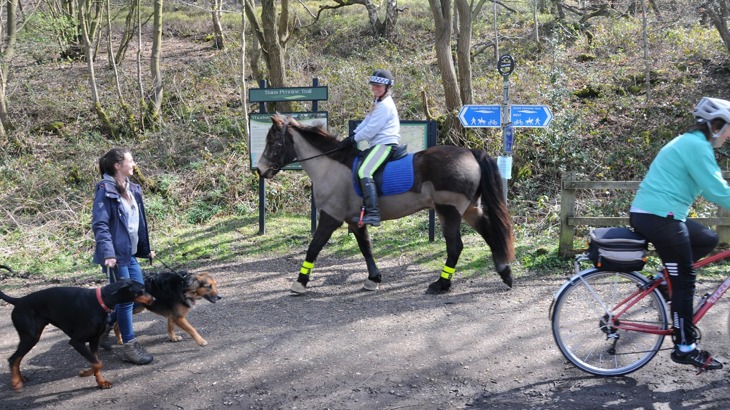Analysis shows that £44.5M was requested to improve or expand existing sections of the National Cycle Network during the Covid-19 pandemic. Our Grant Manager, Paul Hilton explores how the Emergency Active Travel Fund applications during lockdown prove just how vital the Network is.

The Emergency Active Travel Fund (Tranche 2), or the EATF2, is a UK government initiative.
It aimed to ease the restrictions placed on public transport and support the increase in active travel that occurred during the first Covid-19 lockdown in 2020.
A moment of change
With the necessary avoidance of public transport, along with the requirement to ‘stay local’, cycling and walking became a hugely important component in people’s lives.
People used it for exercise, for leisure, and as a way to release the pressures of lockdown.
However, this increase in activity began to show up the inadequacies of our current cycling and walking provision.
The two-metre rule and the requirement for social distancing made clear the shortfall of our narrow pavements, poorly designed cycling infrastructure, overburdened shared-use paths and shared spaces.
The Emergency Active Travel Fund directly responded to this increase in active travel.
It addressed the immediate need to provide alternatives to public transport as well as recognising the long term need to provide alternatives to the car.
It was also a long-overdue recognition of the central role that cycling and walking play in the day-to-day lives of millions of UK citizens.
The need to respond quickly
Tranche 1 of the funding focussed on immediately deliverable and in many cases temporary infrastructure.
This resulted in a sudden proliferation of traffic barriers and bollards appearing across city and town centres throughout the country as the UK emerged from lockdown in June 2020.
Tranche 2 aimed to make some of those changes permanent and by increasing the amount on offer, raising the ambition and scope of schemes to be funded.
Delivery timescales were tight, with a requirement for schemes to have begun delivery before the end of March 2021
This short timescale meant that many local authorities in England looked to enhance, improve access to and expand one of the key pieces of cycling and walking infrastructure in existence and already popular; the National Cycle Network.
The Network at the heart of local journeys
An analysis of the submissions to the Department for Transport to receive funding through the EATF2 reveals that £44.5M was requested to improve or expand existing sections of the National Cycle Network.
This included schemes to:
- widen existing routes
- build new paths to take non-motorised users off busy roads
- and points closures to reduce traffic.
A further £15M was requested to create or improve access to the Network. This included:
- new link routes
- improved on-road crossings
- and other road safety measures.
In total, these requests amounted to a further 77 miles of additional Network, either as new traffic-free paths or traffic-calmed links.
This was not immediately apparent from the applications.
Quite often the Network was not referred to as such, it was often referred to as a "strategic cycle route" or "existing shared-use path".
When the applicant was required to demonstrate the strategic importance of the link, the reference was often to the recently developed Local Cycling and Walking Plan (LCWIP).
This is perhaps a reflection of the importance now placed on these plans (LCWIPs) to demonstrate a strategic approach to cycling and walking, especially when applying for central government funding.
Other applicants were very clear of the importance of the National Cycle Nework, its strategic importance and its popularity to justify the need to improve it or to increase access.

Many of those applying for the Emergency Active Travel Fund were clear of the importance of the National Cycle Nework and its popularity to justify the need to improve it.
Celebrating the Network
Either way, it was clear that the National Cycle Network is a vital piece of cycling and walking infrastructure.
It is a catalyst for more active journeys and an expanded cycling and walking network.
It is also a cause of celebration for Sustrans.
We’re happy to see such an injection of capital funds from a pot of money that is not ring-fenced for the Network and designed to allow local authorities to prioritise and identify the most important areas for investment.
And it is gratifying to see that those priorities include the National Cycle Network.
How you can get involved
You can help us continue to maintain, improve and expand the Network by making a donation or by signing up as a volunteer.
Or you can simply add yourself to the huge number of users by getting out and enjoying what the Network has to offer.
Want to ensure that Network remains at the heart of local transport priorities?
Do tell your local authority, national or regional assembly representative or your Member of Parliament how important the Network is to you and the opportunities for exercise and everyday journeys it provides.
Find out more about the National Cycle Nework.





